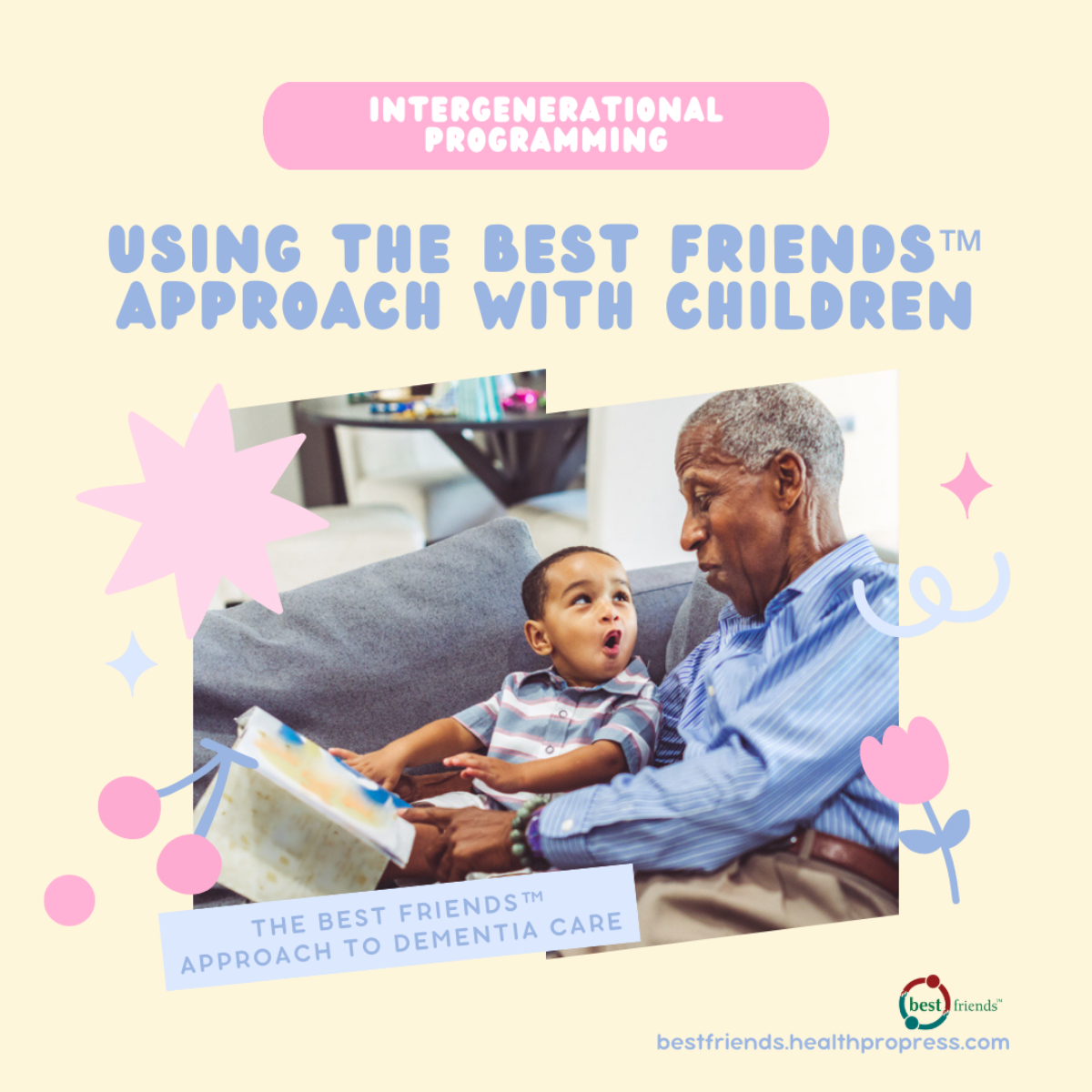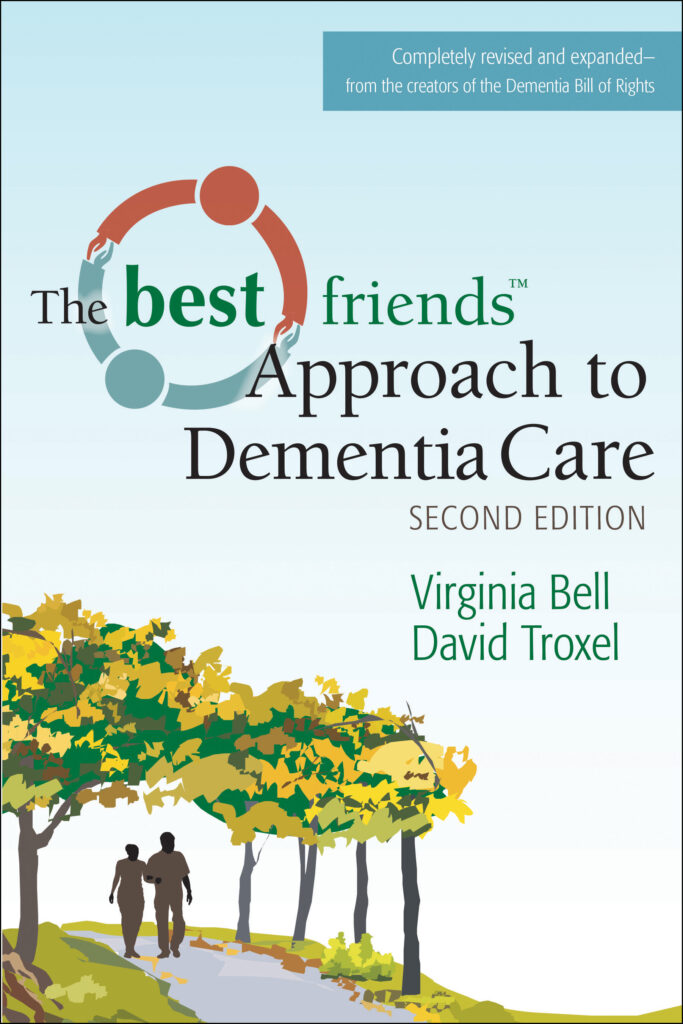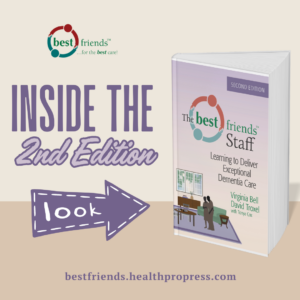
Intergenerational Activities: Using the Best Friends Approach with Children
With the Best Friends™ approach, activities are more than just what’s on the calendar. Using Best Friends, almost everything can become an extended, interesting opportunity for engagement. A simple handshake can lead to a discussion about fingernail polish, gloves, work done by hand, “lifelines,” rings on fingers, promise rings, weddings, and more. A teapot can be enjoyed for its beauty, and discussions can follow about making tea, reading tea leaves, the different flavors of tea, and the Boston Tea Party.
Because the bottom line of the Best Friends approach is to focus on the person rather than the task. In a good dementia care program, all the bases are covered: structured moments, spontaneous moments, group activities, and time spent one-on-one.
Enjoying Time with Children
Involving children in dementia care activities is a wonderful approach to activity programming. Children can be especially loving and accepting of people with dementia. Besides bringing joy and offering opportunities to help or teach young people, intergenerational activities can also be valuable to children with no nearby grandparents. The possibilities are endless for active experiences (such as tossing a ball or painting a picture) or passive experiences (such as listening to music or hearing someone read poems).
Activities to Enjoy with Children
Below are some examples of intergenerational activities and their benefits.
- Making a Halloween mask together can involve both individuals in a fulfilling art project.
- Reading stories aloud to one another can be an opportunity for praise.
- Walking together can provide exercise and a chance to pick wildflowers.
- Enjoying the festivities surrounding a common birthday (blowing out candles, exchanging presents, singing “Happy Birthday,” and eating birthday cake) can evoke smiles and laughter.
- Being with children can make it acceptable for adults to play childlike games and work simple puzzles.
- Working on the computer together can help build bonds as you help the person have a video chat with family members or play simple games.
Gaining a Best Friend
Bringing together adults and children also highlights an unexpected benefit of practicing the Best Friends approach—gaining a Best Friends in return. This benefit is demonstrated in the below story from the Best Friends™ Day Center in Lexington, Kentucky.
Elna, a retired anthropologist who was an early participant in the Best Friends™ Day Center, was paired with James, a student volunteer. James no longer went to regular high school but attended an alternative continuation program. He and some of the other young volunteers from his school looked pretty tough. Many had had trouble with the law. At first, we wondered what kind of Best Friends young James and his cohort would make. Would they show up on time? Would their rough edges ruffle a few feathers? What on Earth would they talk about, across the span of three generations? Would our day center participants with dementia feel uncomfortable?
Eventually we realized that our own filters and prejudices were making us uncomfortable. Although we, and some of our staff and volunteers, were a bit uptight, our participants with dementia didn’t care a whit about tattoos, scruffy beards, or eccentric haircuts and clothes. They just saw the young people as young people, and Elna gave James unconditional love.
James thrived in the program. With Elna’s attention and support, he became a very successful student volunteer. As his program wound down, he told us something startling: being part of the Best Friends program was the first success he had ever experienced in his 18 years on the planet. Being a Best Friend to Elna—and enjoying Elna’s friendship—made a big difference in his life. The Best Friends approach transformed James, too!
Engagement is the hallmark of an outstanding dementia program. Engagement touches a person spiritually, builds relationships, fosters happiness, reduces challenging behaviors, and actually makes your job easier and more fulfilling. Creating a rich social atmosphere in which people are active and engaged throughout the day is good for anyone with dementia. Incorporating children into some activities creates a caring, interesting community environment—a good place to live and work.
Read the book!

For more information on the Best Friends™ approach and creating activity programs and meaningful engagement, get your copy of The Best Friends™ Approach to Dementia Care, Second Edition. Be sure to also visit the Best Friends website to learn more about our array of Best Friends products and support, including introductory and advanced training!
This post was excerpted from The Best Friends™ Approach to Dementia Care, Second Edition by Virginia Bell, M.S.W., and David Troxel, M.P.H. Copyright © 2017 by Health Professions Press, an imprint of Paul H. Brookes Publishing Co., Inc. All rights reserved.





Add comment